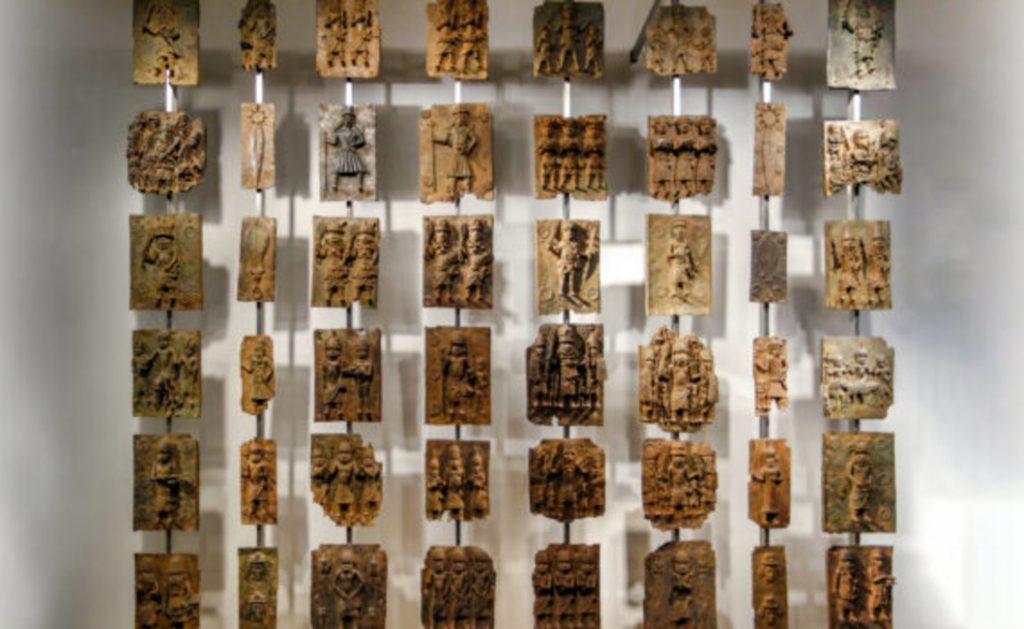The Benin “Bronzes” are a collection of bronze sculptures and artworks that originated from the Kingdom of Benin, located in present-day Nigeria.
These objects date back to the 13th century and depict various aspects of the kingdom’s rich cultural heritage, including its rulers, warriors, and everyday life.
However, their history is marred by violence, theft, and exploitation.
READ ALSO: 10 Terminologies in the Nigerian Army and What They Stands For
During the 19th century, the British Empire sought to expand its influence in Africa, including the West African region where Benin was situated. In 1897, a punitive expedition led by British forces was sent to Benin City, resulting in the destruction of the royal palace and the looting of thousands of cultural artifacts, including the famous Benin Bronzes.
This act of violence not only represented an assault on the kingdom but also a disregard for the cultural significance and artistic mastery of these objects.
The looted bronzes were then dispersed to various institutions and private collectors around the world, further perpetuating their unethical acquisition. Many of these works ended up in museums in Europe and North America. It is estimated that over 3,000 Benin Bronzes are held outside of Nigeria today, with a significant portion residing in the British Museum in London.
READ ALSO: 4 Nigerian Celebrities With Children in United States Military
The significance of the Benin Bronzes lies not only in their artistic beauty but also in their cultural and historical value. These artworks provide a glimpse into the traditions, beliefs, and achievements of the Benin Kingdom. They serve as a reminder of the resilience and ingenuity of the African people despite the colonial violence that sought to erase their history.
In recent years, there has been a growing global movement calling for the restitution of the Benin Bronzes to their rightful owners. This demand for repatriation is grounded in principles of cultural heritage preservation, restitution, and decolonization. It seeks to rectify the historical injustices and acknowledge the agency and contributions of African societies to the world’s cultural heritage.
Returning the Benin Bronzes to their place of origin is not just a matter of justice, but also an opportunity for reconciliation and cultural exchange. It allows for the healing of historical wounds and the celebration of African art and culture on its own terms.
The significance of the Benin Bronzes extends beyond their artistic value; it represents a collective memory and a testament to the resilience of the Benin people.

